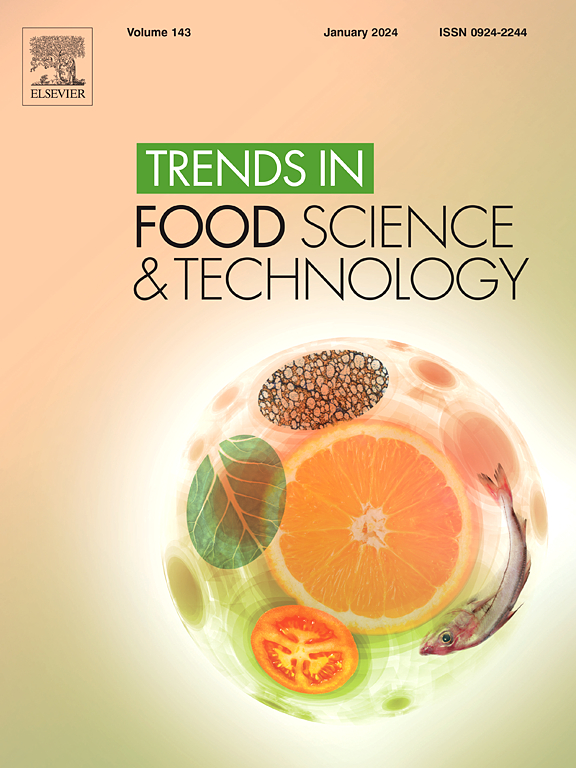Application of computer vision techniques to fermented foods: An overview
IF 15.1
1区 农林科学
Q1 FOOD SCIENCE & TECHNOLOGY
引用次数: 0
Abstract
Background:
Fermented foods are products processed through microbial fermentation and are widely appreciated by consumers around the world for their unique flavors. With advancements in industrial technology and increasing consumer demand, modern techniques are being progressively integrated into the production and quality control of fermented foods to enhance production efficiency and product quality. Among these innovations, computer vision technology stands out as particularly impactful.
Scope and approach:
This paper provides an overview of the applications of computer vision in the field of fermented foods, focusing on its technical algorithms and applications within the food industry. It outlines the specific uses of computer vision technology across different types of fermented foods and discusses the relevant techniques employed. Finally, this review highlights the transformative potential of adaptive learning and multimodal fusion in addressing current limitations of computer vision for fermented food monitoring.
Key findings and conclusions:
The adoption of computer vision technology has significantly improved both the efficiency and accuracy of quality control processes in fermented food production. Through non-contact real-time monitoring, researchers can quickly identify the dynamic changes in microorganisms and related parameter indicators during fermentation and evaluate their impact on food quality. These technologies have not only boosted the efficiency of fermented food production but have also enhanced control over product flavor and safety assessments. Despite ongoing challenges in technology implementation and data analysis, the continuous advancements in deep learning and image processing technologies are expected to increase the impact of computer vision in the field of fermented foods, driving sustainable industry development.
计算机视觉技术在发酵食品中的应用综述
背景:发酵食品是通过微生物发酵加工的产品,因其独特的风味而受到世界各地消费者的广泛欢迎。随着工业技术的进步和消费者需求的增加,现代技术正逐步融入发酵食品的生产和质量控制,以提高生产效率和产品质量。在这些创新中,计算机视觉技术尤其具有影响力。范围和方法:本文概述了计算机视觉在发酵食品领域的应用,重点介绍了其技术算法和在食品工业中的应用。它概述了计算机视觉技术在不同类型发酵食品中的具体用途,并讨论了所采用的相关技术。最后,本综述强调了自适应学习和多模态融合在解决当前发酵食品监测计算机视觉局限性方面的变革潜力。主要发现和结论:计算机视觉技术的采用显著提高了发酵食品生产质量控制过程的效率和准确性。通过非接触式实时监测,研究人员可以快速识别发酵过程中微生物及相关参数指标的动态变化,并评估其对食品质量的影响。这些技术不仅提高了发酵食品的生产效率,而且还加强了对产品风味的控制和安全评估。尽管在技术实施和数据分析方面仍存在挑战,但深度学习和图像处理技术的不断进步有望增加计算机视觉在发酵食品领域的影响,推动行业的可持续发展。
本文章由计算机程序翻译,如有差异,请以英文原文为准。
求助全文
约1分钟内获得全文
求助全文
来源期刊

Trends in Food Science & Technology
工程技术-食品科技
CiteScore
32.50
自引率
2.60%
发文量
322
审稿时长
37 days
期刊介绍:
Trends in Food Science & Technology is a prestigious international journal that specializes in peer-reviewed articles covering the latest advancements in technology, food science, and human nutrition. It serves as a bridge between specialized primary journals and general trade magazines, providing readable and scientifically rigorous reviews and commentaries on current research developments and their potential applications in the food industry.
Unlike traditional journals, Trends in Food Science & Technology does not publish original research papers. Instead, it focuses on critical and comprehensive reviews to offer valuable insights for professionals in the field. By bringing together cutting-edge research and industry applications, this journal plays a vital role in disseminating knowledge and facilitating advancements in the food science and technology sector.
 求助内容:
求助内容: 应助结果提醒方式:
应助结果提醒方式:


